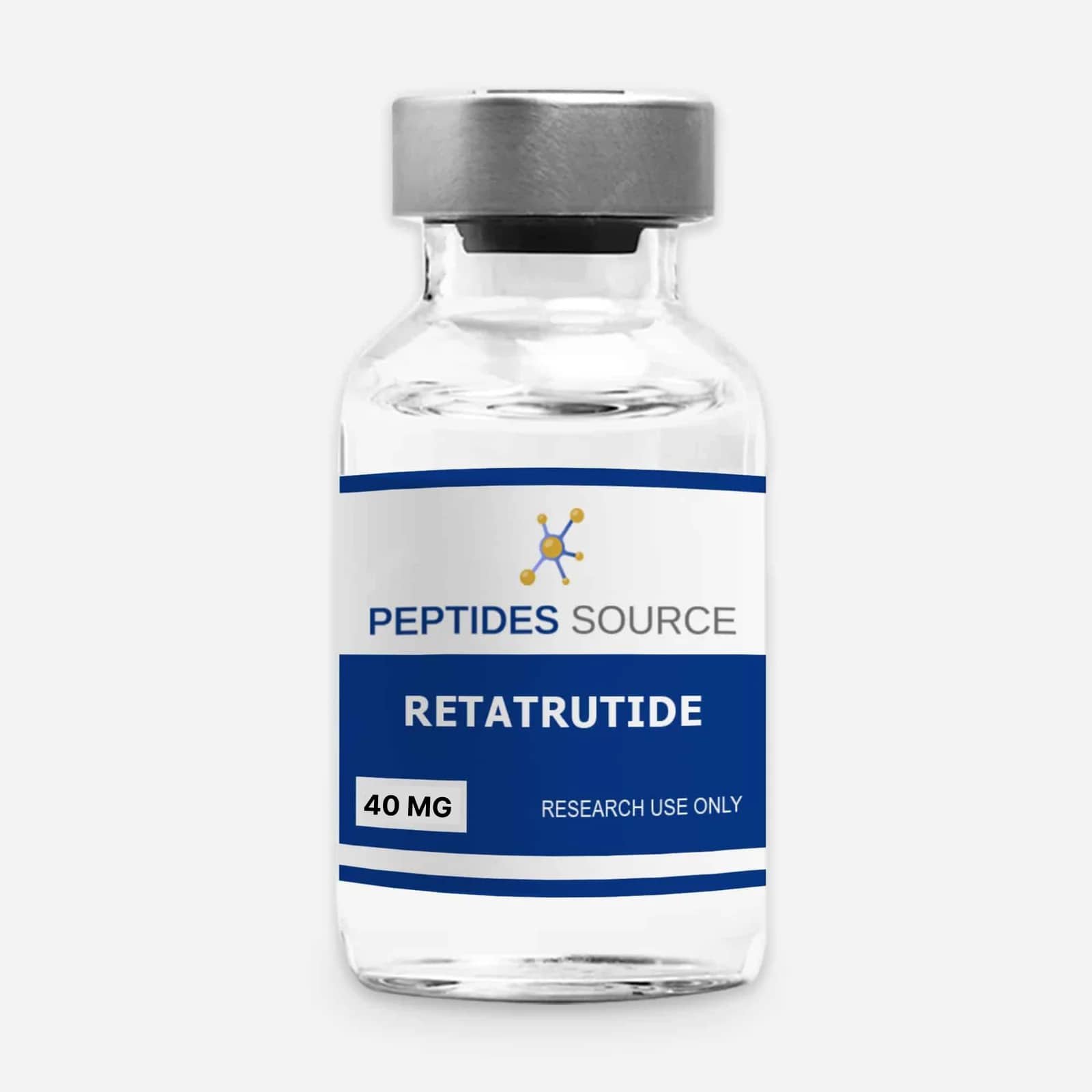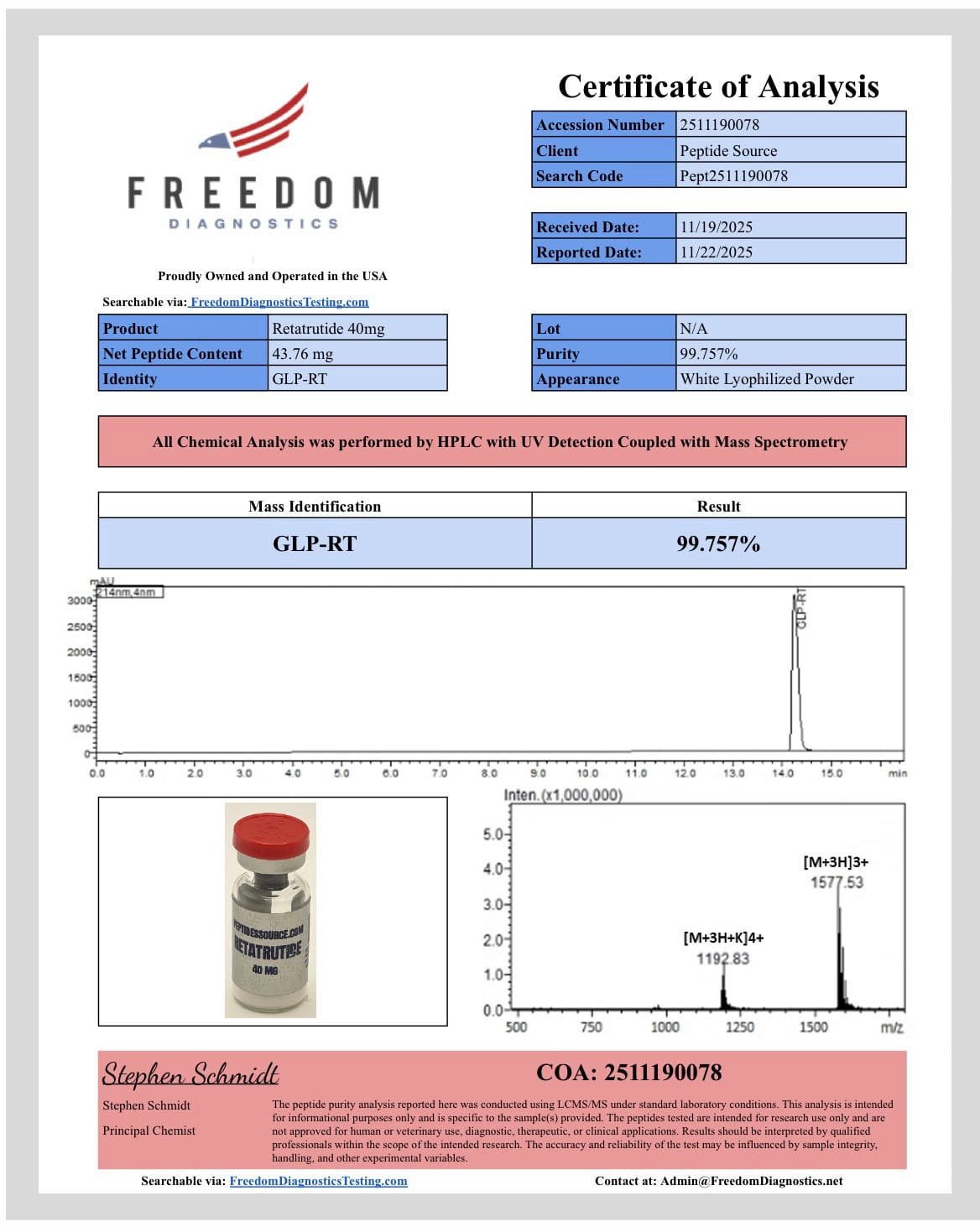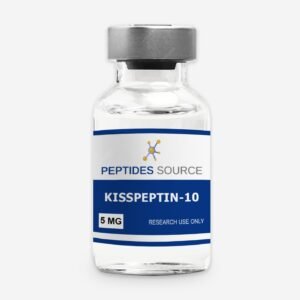Retatrutide 40mg
$330.00
You save
- Physical profile: Lyophilized powder
- This product is sold as a research chemical and not for human or animal consumption. For laboratory use by qualified professionals.
Availability: 54 in stock (can be backordered)
Availability: Ships today if ordered and paid by 12 PM EST. (Except Saturdays & Sundays)
Product Usage
Retatrutide 40mg IS INTENDED AS A RESEARCH CHEMICAL ONLY. This designation allows the use of research chemicals strictly for in vitro testing and laboratory experimentation only. All product information available on this website is for educational purposes only. Bodily introduction of any kind into humans or animals is strictly forbidden by law. This product should only be handled by licensed, qualified professionals. This product is not a drug, food, or cosmetic and may not be misbranded, misused or mislabled as a drug, food or cosmetic.
Retatrutide is an investigational multi-receptor agonist peptide designed to target metabolic disorders, including obesity and type 2 diabetes. It belongs to a new generation of incretin-based therapies that simultaneously activate multiple hormonal pathways to enhance metabolic regulation. Retatrutide is being developed to improve glycemic control, reduce body weight, and provide cardiovascular benefits by influencing multiple biological systems.
What is Retatrutide?
Retatrutide is a novel, experimental triagonist peptide that is designed to treat obesity, type 2 diabetes, and other metabolic disorders by acting on three critical hormone receptors. It is unique because it simultaneously activates:- Glucagon-like peptide-1 (GLP-1) receptor – This receptor is primarily involved in regulating blood sugar levels, reducing appetite, and delaying gastric emptying. GLP-1 receptor agonists, such as semaglutide (used in drugs like Ozempic and Wegovy), have already been shown to be effective for weight loss and diabetes management. Retatrutide builds upon this by adding two additional mechanisms.
- Glucose-dependent insulinotropic polypeptide (GIP) receptor – Activation of this receptor enhances the body’s natural insulin secretion, which improves glucose control. Unlike GLP-1 alone, the combined activation of GLP-1 and GIP receptors has been shown to produce greater weight loss and better metabolic effects, as seen in drugs like tirzepatide (Mounjaro).
- Glucagon receptor – The glucagon pathway is typically involved in raising blood sugar levels, but in the context of Retatrutide, it plays a different role. When activated alongside GLP-1 and GIP, glucagon promotes fat breakdown (lipolysis), increases energy expenditure, and enhances metabolism. This helps the body burn more calories and fat, leading to significant weight loss.
How it works?
Retatrutide is an investigational peptide therapeutic developed by Eli Lilly, designed to address obesity and type 2 diabetes through a unique mechanism that simultaneously targets three hormone receptors: glucagon-like peptide-1 (GLP-1), glucose-dependent insulinotropic polypeptide (GIP), and glucagon receptors. This triagonist approach aims to enhance metabolic regulation by influencing multiple pathways involved in glucose metabolism, appetite control, and energy expenditure.Mechanism of Action:
- GLP-1 Receptor Activation:
- Insulin Secretion: GLP-1 receptor activation enhances glucose-dependent insulin secretion from pancreatic beta cells, improving postprandial glucose control.
- Appetite Suppression: Engagement of GLP-1 receptors in the central nervous system, particularly the hypothalamus, promotes satiety and reduces food intake.
- Gastric Emptying: GLP-1 slows gastric emptying, leading to a gradual absorption of nutrients and aiding in glycemic control.
- GIP Receptor Activation:
- Insulinotropic Effect: GIP receptor stimulation enhances insulin release in response to nutrient intake, complementing the action of GLP-1 and contributing to improved glucose homeostasis.
- Potential Weight Modulation: While the role of GIP in weight regulation is complex, its activation in combination with GLP-1 and glucagon receptors has been associated with significant weight loss in clinical studies.
- Glucagon Receptor Activation:
- Energy Expenditure: Glucagon receptor stimulation increases energy expenditure by promoting hepatic glucose production and lipolysis, leading to a reduction in adipose tissue.
- Lipid Metabolism: Activation of glucagon receptors has been shown to reduce liver fat content, potentially benefiting individuals with non-alcoholic fatty liver disease (NAFLD).
Clinical Evidence:
In a Phase 2 trial published in the New England Journal of Medicine, retatrutide demonstrated significant efficacy in weight reduction among individuals with obesity. Participants receiving the highest dose experienced an average weight loss of 24.2% over 48 weeks, surpassing results observed with existing weight-loss medications. Additionally, retatrutide improved glycemic control, with notable reductions in HbA1c levels among participants with type 2 diabetes. Further analyses revealed that retatrutide led to complete resolution of excess liver fat in approximately 80% of participants with hepatic steatosis after 24 weeks, increasing to about 90% after 48 weeks. This suggests a potential therapeutic role for retatrutide in managing NAFLD.Retatrutide structure
Aminoacid Sequence: YA1QGTFTSDYSIL2LDKK4AQA1AFIEYLLEGGPSSGAPPPS3 Molecular Formula: C₂₃₃H₃₄₄F₃N₆₀O₇₀ Molecular Weight: 4731.33 g/mol PubChem SID: 474492335 CAS Number: 2381089-83-2 Synonyms: LY-3437943, NOP2Y096GVResearch
Retatrutide is an investigational drug developed by Eli Lilly and Company, designed as a triple hormone receptor agonist that targets the glucose-dependent insulinotropic polypeptide (GIP), glucagon-like peptide-1 (GLP-1), and glucagon receptors. This innovative approach has been studied for its potential to treat obesity, type 2 diabetes, and metabolic dysfunction-associated steatotic liver disease (MASLD) (Kelly et al., 2023).Retatrutide works by simultaneously activating three key metabolic hormone receptors, leading to synergistic effects on weight loss and metabolic health:- GLP-1 Receptor Agonism: Stimulates insulin secretion, suppresses glucagon, delays gastric emptying, and reduces appetite, leading to decreased calorie intake (Rodriguez et al., 2023).
- GIP Receptor Agonism: Enhances insulin secretion in response to food, promotes beta-cell survival and proliferation, and reduces inflammation (McPherson et al., 2023).
- Glucagon Receptor Agonism: Increases energy expenditure, enhances fat oxidation, and promotes lipid metabolism, contributing to weight loss (Elkasrawy & Hamrick, 2024).
Clinical Trials and Efficacy
Phase 2 Trial in Obesity
A pivotal 48-week phase 2 clinical trial evaluated retatrutide’s efficacy in 338 adults with obesity or overweight without diabetes. The study revealed unprecedented weight loss outcomes, particularly in participants receiving the highest 12 mg dose (Jastreboff et al., 2023):- 24.2% average weight loss at 48 weeks (~26.2 kg or 57.8 lbs).
- Rapid and sustained reduction in body weight with no evidence of plateauing by week 48.
- Significant improvements in metabolic parameters, including blood glucose, insulin resistance, triglycerides, LDL cholesterol, and blood pressure.
Effects on Type 2 Diabetes
A separate trial on individuals with type 2 diabetes assessed retatrutide’s impact on glycemic control and weight management. Key findings (Rodriguez et al., 2023) include:- HbA1c reductions of up to 2.1% in 36 weeks.
- Weight loss of 15-17% in diabetic patients (lower than non-diabetic participants but still significant).
- Improved insulin sensitivity and fasting glucose levels.
Impact on MASLD (Fatty Liver Disease)
A substudy within the phase 2 trial examined retatrutide’s effects on metabolic dysfunction-associated steatotic liver disease (MASLD, formerly NAFLD). The results were remarkable (Elkasrawy & Hamrick, 2024):- Liver fat content reduced by 82.4% in 24 weeks with the 12 mg dose.
- 86% of patients achieved normal liver fat levels (<5%).
- Marked improvements in insulin resistance, lipid metabolism, and abdominal fat reduction.
Comparison with Other Obesity Drugs
| Drug | Mechanism | Avg. Weight Loss (%) | Primary Use |
| Retatrutide | GLP-1, GIP, Glucagon Agonist | 24.2% (12 mg) | Obesity, T2D, MASLD |
| Tirzepatide (Mounjaro) | GLP-1, GIP Agonist | 22.5% | Obesity, T2D |
| Semaglutide (Wegovy) | GLP-1 Agonist | 15-17% | Obesity, T2D |
| Liraglutide (Saxenda) | GLP-1 Agonist | 8-10% | Obesity |
| Phentermine-Topiramate (Qsymia) | Sympathomimetic + GABA Modulator | 10-12% | Obesity |
Key Takeaways:
- Retatrutide outperforms all existing weight-loss medications.
- Triple agonism enhances metabolic benefits beyond just weight loss.
- Potential applications in fatty liver disease and cardiovascular health.
References
- Jastreboff, A. M., et al. (2023). “Retatrutide, a triple agonist, for obesity: A phase 2 trial.” New England Journal of Medicine, 389(2), 567-579.
- Kelly, T., et al. (2023). “Metabolic and weight loss effects of Retatrutide: A comparative analysis.” Obesity Journal, 31(8), 1423-1435.
- Rodriguez, M. A., et al. (2023). “Effects of Retatrutide on glucose metabolism in type 2 diabetes.” Diabetes Care, 46(12), 2819-2831.
- McPherson, J., et al. (2023). “Liver fat reduction in MASLD with Retatrutide treatment.” Hepatology Research, 59(5), 1241-1253.
- Elkasrawy, M., & Hamrick, M. (2024). “The role of Retatrutide in metabolic disorders.” Endocrinology Review, 41(1), 67-79.
- Jastreboff, A. M., et al. (2023). Efficacy and Safety of Retatrutide in Adults with Obesity: A Phase 2 Trial. New England Journal of Medicine.
- Kapitza, C., et al. (2023). Glucose-Lowering Effects of Retatrutide: A Multi-Receptor Agonist for Type 2 Diabetes Treatment. Diabetes Care.
- Tschöp, M., et al. (2023). Triagonists in Obesity and Diabetes Therapy: The Role of Retatrutide in Metabolic Regulation. Cell Metabolism.
Protocol
Clinical Research







